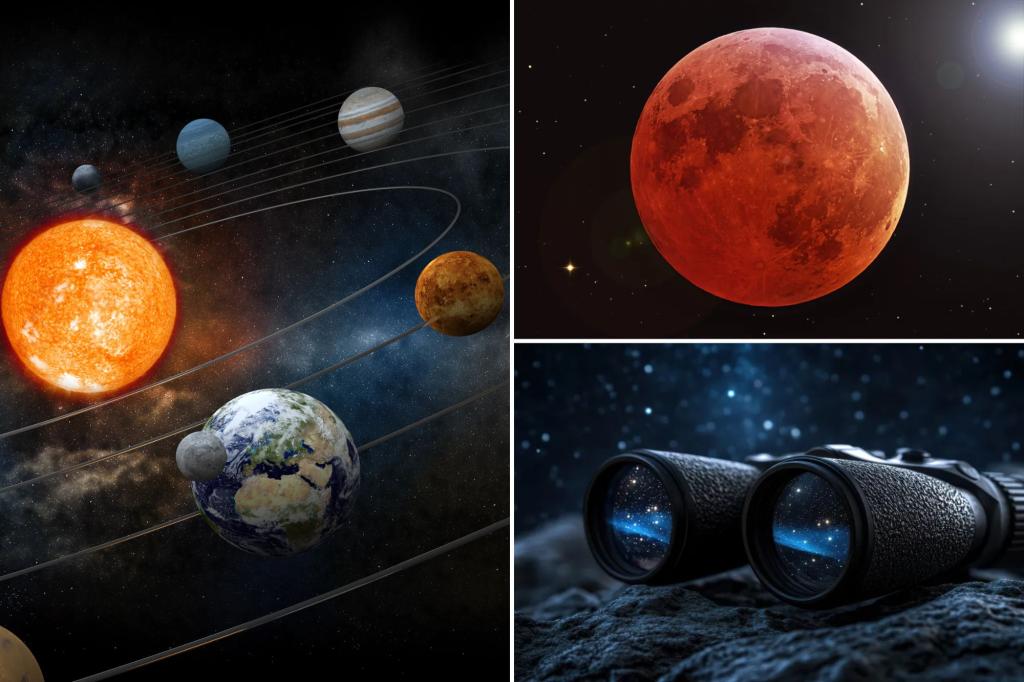A Celestial Spectacle: Six Planets Align in the Night Sky
This month, skywatchers are in for a treat as six planets – Venus, Mars, Jupiter, Saturn, Uranus, and Neptune – gather in a celestial alignment, gracing the night sky from now until mid-February. This phenomenon, while not a perfectly straight line in space, presents a captivating visual as these planets cluster on one side of the Sun, offering a unique opportunity for observation. Though termed a "parade," this alignment is, as Time Magazine points out, more of an optical illusion. The planets are scattered at various distances and depths in space, much like arranging individuals in a field and positioning oneself to capture them all within a camera lens. The alignment’s visual appeal stems from our Earthly perspective, witnessing these celestial bodies seemingly grouped together in our night sky.
Understanding Planetary Alignments: From Mini to Grand
Planetary alignments occur when more than two planets appear close together in the sky from our vantage point on Earth. They are categorized based on the number of participating planets: three planets constitute a mini-alignment, four a small alignment, five or more a large alignment, and the rare alignment of all eight planets a great or full alignment. Given our position on Earth, we can observe a maximum of seven or eight planets (including Pluto if considered) in an alignment. However, these celestial bodies are not always positioned in the same area of the sky. When five or more planets congregate within a small celestial region, the alignment is often referred to as a "parade"—a term used more for its evocative imagery than strict astronomical definition. The last seven-planet parade occurred in June 2022, highlighting the relative infrequency of such events. While not exceptionally rare, NASA confirms these parades do not occur annually, adding to the significance of this month’s alignment.
Observing the Planetary Parade: Optimal Viewing Times and Dates
The prime viewing window for this planetary parade is from sunset until approximately 9:00 to 9:30 p.m. local time. Saturn and Venus will be situated close together in the southwest, Mars will be visible in the east, and Jupiter will dominate the sky overhead. This celestial display will continue each night, weather permitting, until mid-February, with two particularly noteworthy dates. On January 21st, Jupiter and Venus will ascend in the night sky, shining with increased brilliance against a darker backdrop due to the moon’s later rise. This enhanced darkness will provide ideal conditions for observing the aligned planets. On February 1st, Venus will appear in close proximity to a slender crescent moon in the southwest sky, creating a visually stunning pairing for several hours before they set below the horizon.
Enhancing Your Viewing Experience: Location and Tools
To maximize the impact of this celestial event, seek locations with minimal light pollution, such as dark sky communities, for optimal viewing. Allow your eyes at least 30 minutes to adapt to the darkness. While phone use can detract from the dark sky experience, astronomy apps like Starwalk can help locate and identify the planets accurately. Fortunately, the planets’ inherent brightness allows for visibility even in light-polluted cities, ensuring a broader audience can enjoy this cosmic spectacle.
A Closer Look at the Planets: Visibility and Significance
While Venus, Mars, Jupiter, and Saturn are easily visible with the naked eye, observing Neptune and Uranus requires a telescope or high-powered binoculars. This month’s alignment coincides with Mars’ closest approach to Earth in two years, making the red planet appear larger and brighter than usual, adding a striking element to the celestial display. Furthermore, Mercury will join the alignment on February 28th, 2025, bringing the total number of aligned planets to seven – Saturn, Mercury, Neptune, Venus, Uranus, Jupiter, and Mars. This expanding alignment emphasizes the dynamic nature of our solar system and the unique viewing opportunities it presents.
Astrological Interpretations of the Planetary Alignment
From an astrological perspective, this planetary alignment places Venus, Saturn, and Neptune in Pisces, a water sign associated with emotions, spirituality, and illusion. Mars, currently in retrograde motion, resides in Cancer, a sign linked to home, family, and emotional security. Jupiter sits in Gemini, known for communication, intellect, and duality, while Uranus occupies Taurus, a sign representing stability, sensuality, and material possessions. When Mercury joins the alignment in February, it will be positioned in Aquarius, a sign associated with innovation, individuality, and humanitarian ideals. Astrologers often interpret planetary alignments as having symbolic significance, influencing individual and collective experiences. These interpretations vary, but they often consider the planets’ positions within the zodiac signs and their interactions with each other.










